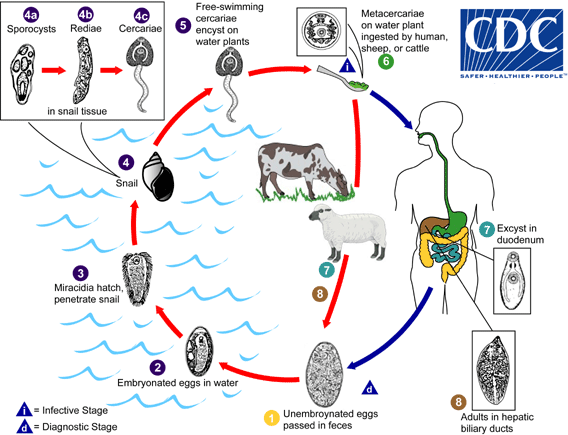Файл:Fasciola LifeCycle.gif
Перейти к навигации
Перейти к поиску
Fasciola_LifeCycle.gif (568 × 435 пкс, размер файла: 58 КБ, MIME-тип: image/gif)
История файла
Нажмите на дату/время, чтобы посмотреть файл, который был загружен в тот момент.
| Дата/время | Миниатюра | Размеры | Участник | Примечание | |
|---|---|---|---|---|---|
| текущий | 19:05, 9 июля 2015 |  | 568 × 435 (58 КБ) | CFCF | updated |
| 16:59, 10 мая 2006 |  | 568 × 435 (45 КБ) | Patho | {{Information| |Description=Causal Agents: The trematodes Fasciola hepatica (the sheep liver fluke) and Fasciola gigantica, parasites of herbivores that can infect humans accidentally. Life Cycle: Life cycle of Fasciola hepatica Immature eggs are disch |
Использование файла
Следующие 3 страницы используют этот файл:
Глобальное использование файла
Данный файл используется в следующих вики:
- Использование в ca.wikipedia.org
- Использование в ceb.wikipedia.org
- Использование в cs.wikipedia.org
- Использование в de.wikibooks.org
- Использование в es.wikipedia.org
- Использование в fr.wiktionary.org
- Использование в gl.wikipedia.org
- Использование в gl.wiktionary.org
- Использование в hi.wikipedia.org
- Использование в it.wikipedia.org
- Использование в kk.wikipedia.org
- Использование в se.wikimedia.org
- Использование в sv.wikipedia.org
- Использование в vi.wikipedia.org
- Использование в vi.wiktionary.org

